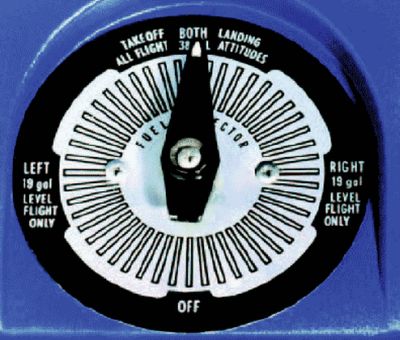Tom Gordon
Filing Flight Plan
- Joined
- May 6, 2017
- Messages
- 3
- Display Name
Display name:
Tom
Hello - this might be a dumb question, but maybe not. In a 1973 Cessna 172, on the fuel control valve face, if the knob is pointing at 10 or 2 (imagine a clock face), will fuel still be flowing? If so, from both tanks? Thank you -


